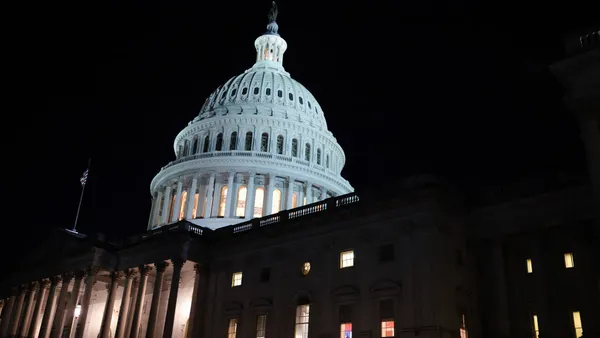Dive Brief:
-
The Consortium for School Networking (CoSN) is sharing its IT Crisis Preparedness Countdown resource guide to help schools prepare for a natural disaster. The checklist is designed to keep schools going in an emergency situation, EdScoop reports.
-
Keith Krueger, CoSN CEO, recommends creating a continuity plan long before disasters hit. The checklist spells out steps to take 72, 48 and 24 hours in advance of a predicted disaster, such as a hurricane.
-
The recommendations include having proper equipment set aside to respond during and after the disaster including masks, boots and flashlights. Also, cameras that feature time and date stamps are critical since photographs of damage are required by insurance companies.
Dive Insight:
Natural disasters in recent years have left many districts facing months and years of recovery, and recently record-breaking numbers of tornadoes have touched down in the Midwest. Other parts of the country have experienced epic flooding, cataclysmic forest fires and devastating hurricanes. Through it all, schools must go on.
Districts that don’t already have an emergency plan should create one and if the plan is dated, experts recommend taking time refresh it. The plan should include caring for the building, but also caring for the mass amounts of student data that is likely stored inside. Some schools have backed up data to cloud services that are off-site and often out-of-state, away from any local catastrophes. Though districts express concerns about potential data breaches and meeting Family Education Rights and Privacy Act (FERPA) requirements, these obstacles can be overcome by careful vetting of the cloud vendors.
Districts that opt to avoid cloud storage and keep all data on-site are taking the risk of losing it all in the event of damage to their servers. In the event that equipment is damaged, experts will need to be hired, which can be very expensive. Those experts also must be FERPA compliant.
Once a disaster strikes, data recovery will likely be the last thing on administrator’s minds. California’s loss of school buildings during the recent spate of wildfires demonstrates how complicated reopening a school can be. If a school is still standing, the building must undergo cleanup, debris removal and utility replacement before it can reopen to students.
Also, districts will need to address psychological impacts on students. Seven months after the devastating Camp Fire in Northern California, Paradise High School students are still struggling. The entire high school was relocated to a new location in nearby Chico, but emotionally it hasn’t been an easy transition. One of the school’s most immediate problems is finding enough counselors to help student sort through their trauma. And in Florida's Bay District Schools, many families are still in temporary housing and officials say they've seen increases in student behavior issues.





 Dive Awards
Dive Awards







